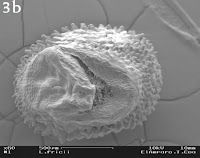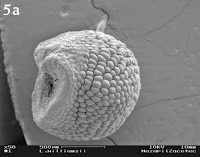The Guardian recently wrote: “Twelve Russian scientists famously chose to starve to death rather than eat the unique collection of seeds and plants they were protecting for humanity during the 900-day siege of Leningrad in the second world war. But the world’s first global seed bank now faces destruction once more, to make way for a private housing estate.”
Sadly, a few days ago a court in Moscow ruled in favor of the Russian Federal Fund of Residential Real Estate Development, recognizing the legitimate transfer of the land housing the Pavlovsk Station for the construction of residential properties. That being said, President Medvedev has announced on Twitter that this issue needs to be “scrutinised” so the valuable field genebank is not lost yet. You can help save the Pavlovsk Station by signing the Global Crop Diversity Trust’s petition to the President of Russia to stop the destruction of the future of food or you can tweet Dmitry Medvedev on behalf of Pavlovsk Station:
@KremlinRussia_E Mr. President, protect the future of food - save #Pavlovsk Station! http://bit.ly/d2H96s

Redcurrant berries (Ribes rubrum)
The Pavlovsk Experimental Station was established in 1926 by Nikolai Vavilov, the botanist who conceived the idea of creating seed banks as repositories of plant diversity that could be used to breed new improved varieties of food crops.
You might ask why it is important to save the Pavlovsk genebank – the Guardian article puts it this way: “At stake, say Russian and British campaigners for the station, is not just scientific history but one of the world’s largest collection of strawberries, blackcurrants, apples and cherries. Pavlovsk contains more than 5,000 varieties of seeds and berries from dozens of countries, including more than 100 varieties each of gooseberries and raspberries.
More than 90% of the plants are found in no other research collection or seed bank. Its seeds and berries are thought to possess traits that could be crucial to maintaining productive fruit harvests in many parts of the world as climate change and a rising tide of disease, pests and drought weaken the varieties farmers now grow. As it is predominantly a field collection, Pavlovsk cannot be moved. Experts estimate that even if another site were available nearby, it would take many years to relocate the plants.”
In a weirdly twisted, almost tragicomical, logic the property developers have argued that the collection at the Pavlovsk Station is “priceless” and since no monetary value can be assigned to it the collection must consequently be worthless! The Russian Federal Fund of Residential Real Estate Development has applied a similar distorted “logic” by saying that the collection doesn’t really exist as it was never officially registered. Let’s hope that the ongoing campaigns can convince the Russian authorities that this important genebank needs to be preserved.

Half a strawberry
The strawberry and redcurrant photos are taken from Wikipedia and are licensed under the Creative Commons Attribution-Share Alike 2.0 Generic license and the GNU Free Documentation License, Version 1.2 respectively.
Read more on the Pavlovsk situation in this post.
Monday, August 30, 2010
Pavlovsk Experimental Station, world's first seed bank, faces destruction
Sunday, August 22, 2010
An expanded description of Lophophora alberto-vojtechii
Šnicer, Bohata and Myšák recently expanded on their original description of the miniature peyote, Lophophora alberto-vojtechii, in the article The Littlest Lophophora – an article that also proposes a new key to the classification of Lophophora.
The hallmark of the new peyote species is its minuscule size, rarely exceeding 2.5 cm (~ 1'') in diameter. The Lilliputian stature is eminently illustrated by the following picture of Vojtěch Myšák (one of the persons for whom the plant is named) photographing a specimen in northern Zacatecas.
Lophophora alberto-vojtechii being photographed by Vojtěch Myšák
The expanded description of Lophophora alberto-vojtechii reads:
The stem is grayish green with a touch of mauve and is for the most part concealed below ground. The aboveground part (the crown) is flat to slightly convex and 10–50 mm wide in adult plants (average 18 mm, well under an inch). The subterranean part of the stem is cylindrical, extending 25 mm down from the base of the crown (the depth in adult plants increasing with age). The stem is distinctively small and divided into five ribs, or eight in exceptional cases. Trichomes (fine epidermal outgrowths which might be called fuzz or hair) are visible only near the growing point and drop off early, leaving the areoles inconspicuous.
The root is thick and bulbous, up to 30 mm long, and typically 16 mm in diameter where it joins the subterranean stem. It is smooth and a dirty white to creamy yellow color.
The flower is 15–35 mm (average 23 mm) wide. The style is longer than anthers and overtops them, and the petals are long relative to their width, both traits in accord with other members of the Diffusae. Filaments are white, anthers a yellowish orange. The style is white and topped by a white to yellowish or pinkish stigma. Tepals are white to dirty pink, rarely creamy yellowish, and bear a lengthwise stripe in a brownish, salmon, or darker pink shade.
The fruit, dirty white, yellowish, or pinkish, is round to slightly claviform and dries out over time.
Seeds are black, round, 1.15–1.45 mm long × 1.0–1.45 mm wide with the hilum compressed into a broad V–shape. The perimeter of the hilum consists of a pronounced edge. The testa is nodulated, and individual cells of the testa are clearly demarcated.
Type locality: northern San Luis Potosí, Mexico, 1700 meters above sea level. The type specimen was collected by GS Hinton on 1 August 2007 and is kept at the GB Hinton herbarium filed under number 28642.
We have named the plant Lophophora alberto-vojtechii in honor of two people: the late prominent Czech traveler and cactus-hunter Alberto Vojtěch Frič and the living lophophora enthusiast Vojtěch Myšák.

Lophophora alberto-vojtechii flower visited by an unidentified diptera
Three insects (two kinds of bees, one large and one small, and an unidentified diptera) have been observed visiting flowers of Lophophora alberto-vojtechii. The plant being visited by a fly in the above picture is from the second known locality in San Luis Potosí and has exceptionally numerous tepals.
The mini-peyote grows in flat, alluvial sediments that transform into greasy mud flats during rain periods. L. alberto-vojtechii has a distinctively geophytic lifestyle, in dry periods it withers and withdraws into small cavities below ground where it is covered with dust and dry leaves by the wind, effectively protecting the plant from the harsh environment. When rains arrive, the plants absorb water and swell, pushing the photosynthetic crown back up above ground level.

Zacatecan Lophophora alberto-vojtechii plant hidden by its flower
In Zacatecas L. alberto-vojtechii flowers can on rare occasions reach over 3 cm in diameter, totally obscuring the plant below - specimens of L. alberto-vojtechii from the plains of northern Zacatecas are lighter flowered than those at the type locality.

Lophophora alberto-vojtechii growing in mud flat
All pictures are taken from the article The Littlest Lophophora.
Tuesday, August 03, 2010
Key to the genus Lophophora sensu Šnicer et al.
In the article The Littlest Lophophora Šnicer, Bohata and Myšák detail the discovery of the new species Lophophora alberto-vojtechii and expand on the description originally given in the June 2008 issue of Cactus & Co.
The article also gives a key to the species of Lophophora which are divided into two sections Lophophora and Diffusae. These sections were originally introduced by the same authors in the booklet Genus Lophophora Coulter - Kaktusy special 2, 2005 and the division was based primarily on chemical composition but also on other factors like habitat, incompatibility of the species, rib numbers and morphology. Members of the Lophophora section are characterized by having concentrations of the psychotropic (mind-altering) alkaloid mescaline ranging from 15–30% of the total alkaloid content, while members of the Diffusae section contain a maximum of 1.3% mescaline. Šnicer et al. recognize five species of Lophophora.
| SECTION LOPHOPHORA |
|---|
| L. williamsii (Salm-Dyck) Coulter |
| SECTION DIFFUSAE |
|---|
| L. diffusa (Croizat) Bravo |
| L. fricii Habermann |
| L. koehresii (J. Ríha) Bohata, Myšák & Šnicer |
| L. alberto-vojtechii J. Bohata, V. Myšák & J. Šnicer |
The following key to the species of Lophophora assumes that L. alberto-vojtechii is allied with the non-mescaline-prevalent species, i.e. it is placed in the Diffusae section.
| KEY TO THE SPECIES OF LOPHOPHORA | ||
|---|---|---|
| 1 | 15–30% mescaline in total alkaloids, epidermis tough and thick | Section Lophophora, L. williamsii |
| 1 | Maximum 1.3% mescaline in total alkaloids; thin, fine epidermis | Section Diffusae, 2 |
| 2 | Seed hilum wide (almost circular), testa not nodulated but reticulated | L. koehresii |
| 2 | Seed hilum V–shaped, testa nodulated (outer cell walls protruding), individual testa cells clearly demarcated | 3 |
| 3 | Usually five (rarely eight) ribs, stem solitary in nature, miniature (rarely exceeding 25 mm in diameter) | L. alberto-vojtechii |
| 3 | Up to 21 ribs, stem solitary or branching in nature | 4 |
| 4 | Flowers dirty white with touch of yellow (rarely pinkish); fruits white to dark pink, usually pale pink; occurring in Queretaro, Mexico | L. diffusa |
| 4 | Flowers usually light pink to dark purple-pink, also white; fruits pink to dark purple-pink (when flower is white the fruit is always dark purple-pink); Coahuila, Mexico | L. fricii |
Seed morphology is an important factor in the above key. In their original publication on Lophophora alberto-vojtechii Šnicer et al. included SEM images illustrating the differences between the seeds of the various Lophophora species, these images along with their description are included below (Šnicer et al. attribute the SEM images to Gerhard Köhres; the images below are not scanned from the article but based on the ones included in the online French version of the article - just to make sure that credit is given where credit is due ;-)
All Time Most Popular Posts
-
On various occasions I've been asked what growing media I'm using for my cactus plants. I don't have a set soil mix recipe as su...
-
Lophophora williamsii (peyote) populations have diminished in large areas of South Texas where peyoteros harvest the cactus for ceremonial ...
-
Below is a list of retailers/nurseries selling cactus seed and plants. I've only listed vendors I've done business with. If you ar...
-
Most cacti are easily grown from seed - and with a little patience and care they can be grown into beautiful plants. Lophophora williamsi...
-
In last month’s post on the troubled Texan peyoteros I referred to Anderson’s article on the peyote situation in Texas. Given the importanc...
-
Yet another slightly off topic and probably not entirely politically correct post, but I couldn’t help noticing the similarity of my monstr...
-
Flowering stand of San Pedro cacti (Trichocereus pachanoi) To me the main draw of the San Pedro cactus ( Trichocereus pachanoi (syn. Ech...
-
In the June 2008 issue of the Cactus & Co magazine Jaroslav Šnicer, Jaroslav Bohata, and Vojtěch Myšák described a new Lophophora spec...
-
There seems to be an increased focus on the alarming Texas peyote situation. A couple of weeks ago the Houston Press published a mournful, i...
-
I spent two weeks working in Delhi, India during January. I had one weekend off and had planned to spend it in Delhi at my own leisure, but ...






































